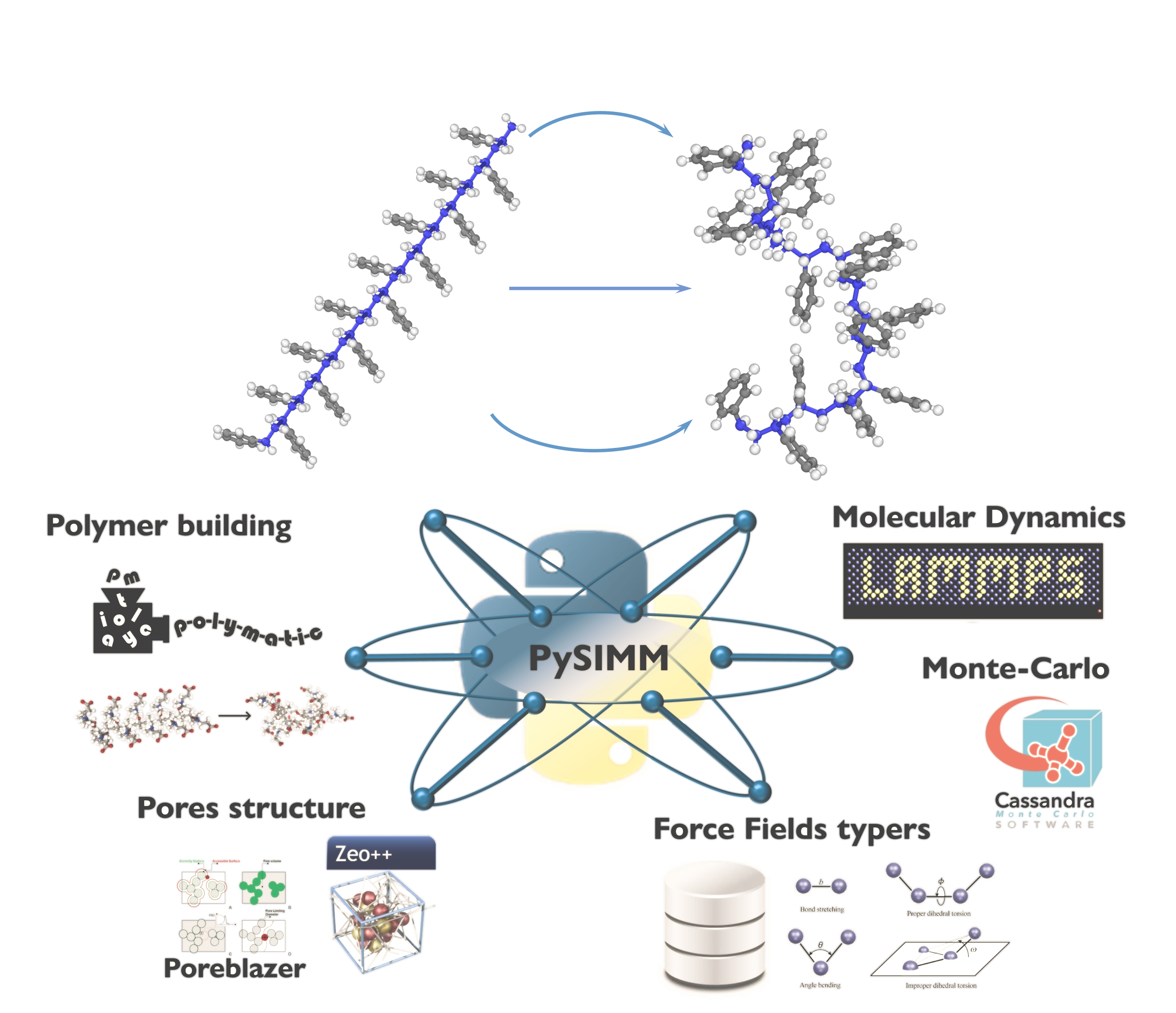Introduction to In Silico Synthesis of Polymers via PySIMM [Article v1.0]
DOI:
https://doi.org/10.33011/livecoms.4.1.1561Abstract
Pysimm is a framework for molecular simulations of polymers and polymer-based nanostructures, which enables their direct chemical synthesis and preparation. Pysimm facilitates the understanding of novel, amorphous, processable materials for a broad range of applications, including heterogeneous catalysts, adsorbents and gas storage materials, as well as protein-polymer conjugates. This tutorial provides a detailed guide on the construction of atomistic and united-atom models of polymers using Pysimm: an open-source Python Application Programming Interface for atomistic molecular simulations. The API complements and simplifies the work of widely known molecular simulation software, such as LAMMPS, CASSANDRA, NAMD and Amber. Readers should be familiar with the basic concepts of atomistic molecular simulations, as well as the basic knowledge of Python programming language, before attempting to follow this tutorial.
This work is separated into 3 main sections. First, the process of building an atomic-level model of a polymer chain from its repetitive units is described. The second section shows how to work with existing forcefields, and how Pysimm can automatically read, recognize, and assign appropriate Force Field parameters to a molecule. The final section discusses how to use Pysimm to construct polymer chains with pre-specified tacticity. The section is also available in the form of an interactive Jupyter notebook tutorial outlining simple guidelines to construct polymer models.

Downloads
Published
How to Cite
License
Copyright (c) 2022 Alexander G. Demidov, B. Lakshitha A. Perera, Michael E. Fortunato, Sibo Lin, Coray Colina

This work is licensed under a Creative Commons Attribution 4.0 International License.

